From the Newsletter of November 2020… Would you like to receive it by e-mail? Join Muses & A.R.T. !
Or ask it for free via our contact form !
Retouching or Inpainting
When a work has gaps or holes… reintegration operations are necessary. The first operation consists of filling the gaps with a filler to bring the lacunas to the same level as the surrounding original and the second operation is the application of colour, otherwise known as retouching or inpainting in the jargon of the restorer’s profession.
This reintegration can vary in technique and appearance depending on the restorer, the institution or the age of the work… Dirt can be created or cracks imitated in order to make the work more legible, while taking into account its historical aspect, i.e. the work in question must retain the passage of time on its material. It is obvious that an 18th century painting should not appear as new and “restoration/conservation” are not synonymous with “renovation”. Furthermore, it is important to point out that the techniques used must comply with the profession’s code of ethics, namely stability and reversibility. So goodbye acrylics and oil paints !
The illusionnist method :
Retouching consists of providing legibility when the degradation of the pictorial layer no longer allows it. The most frequent method is called illusionist. It is more particularly adapted to works whose lacunar state is not too important or not too old (from the 18th century). This retouching must create an illusion, and seek chromatic identity in relation to the original without invention on the part of the restorer and without ” overlapping ” with the original coloured layer. This technique must be mastered for a perfect integration of the lacunar zones, from a distance as well as up close, while keeping the key words of our actions : respect of the work and its creator and legibility. These notions often represent the pitfall of the profession, as producing “a beautiful restoration” can be more tempting than “good conservation”.
Visible retouch
As for the so-called visible retouching, it was born in the aftermath of the Second World War, from the need to reintegrate destroyed works such as Mantegna’s frescoes in Padua without deceiving the viewer about the extent of the damage. The first visible retouching was developed by Cesare Brandi, an art historian and restoration specialist : the tratteggio. This retouching consists of a network of vertical lines of pure colours juxtaposed on a white fill. The method is based on the principle of breaking down the tones into pure colours and recomposing them in the eye thanks to the persistence of light images on the retina. Up close, the extent of the retouching is visible, from a distance it is perfectly integrated. This method is well suited to works painted in “tempera” or primitive works (from the 14th to the 16th century). The retouching called “in neutral tint” is also a visible technique. This is an “archaeological” retouching which consists of choosing a tone frequently used in the work or painting so as to make the deficient area “disappear”. The last visible retouch is the pointillist method. It consists of a set of juxtaposed pure colour dots. It is often chosen for works already marked by this technique, such as primitive paintings or more recent paintings such as certain pointillists or neo-impressionists. This technique was studied by Chevreul and, if the dots are miniaturised, is similar to the pixels used in publishing or even television.
In conclusion, whatever the chosen retouching, its execution depends on the extent of the wear and tear, the missing parts… because a recent work can receive a high level of reintegration if it has not undergone too many alterations, but a very old work should not be presented to the public as if it had just come out of the workshop … Let’s not forget that in this case, it is an “aesthetic forgery” !
